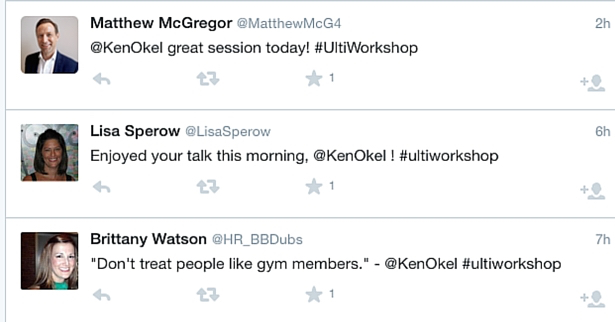 The ability to give feedback opens the door to professional growth and development. When done correctly, it’s a powerful tool.
The ability to give feedback opens the door to professional growth and development. When done correctly, it’s a powerful tool.
The challenge for many leaders is that giving feedback isn’t taught in school. Some feel uncomfortable providing the guidance. As a result, the feedback either never is offered or is delivered so poorly that the recipient takes it as a personal attack.
Here are some things to keep in mind the next time you need to help someone improve his or her performance:
Give Feedback: Is It Fair?
Do you focus on the outcome of work or the person who did the work? There is a difference between saying, “You did not achieve your performance goal,” and, “You’re a horrible employee who can’t meet a deadline.”
One starts a discussion, the other ends a relationship with an employee. How you choose your words makes a difference.
Give Feedback: How Would You React?
It’s dangerous to assume everyone will react the same way you will. Remember, based on their past experiences, people may interpret situations differently. Your goal is to let the other person examine what went wrong and figure out how to prevent future problems.
It’s very likely that he or she already knows the outcome fell below expectations. Your goal should be to refocus the person on success.
Think of it like sharpening a dull knife. You don’t throw out the knife because it made some poor cuts. You take better care of the knife, so it does its job better.
Also, remember when you were given advice that helped you grow and what made it resonate with you.
Give Feedback: Don’t go “Bad Cop”
If you interrogate employees like a tough TV police detective, they may become very flustered, turning a discussion into an argument.
Fighting doesn’t serve your big picture needs. You want to empower the employee and keep the focus on your shared goals.
Start a discussion through the use of questions. Ask things like, “What do you think would be a good way to make sure you reach your next sales goal?”
Along those lines you may want to also ask, “How can I support you better so that you’ll achieve your goal?”
You want an exchange of ideas that ultimately gets the results everyone wants. Think of your words as tools. Think of being a supportive coach and not a snarky film critic.
Give Feedback: Define the Next Step
After a good conversation, outline a next step that builds upon the discussion. This ensures your employee won’t fall back on old behaviors that never work and instead will focus on making positive changes.
This important step opens the door to growth. Think of it like a coach demonstrating the proper technique to an athlete. Coaches, like successful leaders, understand the power of works to improve performance.






